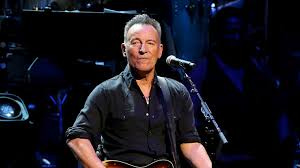Modest Proposal: Start with the Originals
Before the release of Bruce Springsteen's soul covers album, spare a moment for the template-makers......
Bruce Springsteen is nothing if not reverent.
Talking about his own songs and the music that shaped him, the 73-year-old rock star communicates a rare understanding of the mystical forces of music: In his cosmology, a musician’s respect for flyspeck production details runs alongside a preteen fan’s excitement at the emotional rush of a great single. His shows celebrate the raw impulsive energy of rock and roll in all its forms: He approaches seminal figures (Bo Diddley, Chuck Berry) and overlooked greats (Sam & Dave, Mitch Ryder) with equal awe and intensity. He’s a star who’s sought inspiration from the world beyond the cloister of rock: In his work, pre-rock figures like Pete Seeger rub elbows with authors (John Steinbeck, others) and post-rock rebels like Tom Morello of Rage Against the Machine.
Prepare for more reverence: Springsteen’s got an album of soul covers on the runway. Only the Strong Survive, which comes out Friday, offers lavish interpretations of 15 classics and should-have-been classics from the ‘60s, ‘70s and ‘80s. The song list includes big hits (the title track, the brooding “The Sun Ain’t Gonna Shine Anymore”) and great songs that somehow fell through the cracks (William Bell’s “Any Other Way,” Frank Wilson’s Motown-vault gem “Do I Love You (Indeed I Do)”), and a few eyebrow-raisers (“Nightshift,” the Commodores’ 1985 tribute to Marvin Gaye and Jackie Wilson, and Dobie Gray’s nostalgic “Soul Days.”)
Springsteen has said that a primary motivation was the chance to focus on the singing, the vocal inflections, the phrasing. Sure enough, his voice is resolute and full of fire, and as he retraces the famous footsteps of Aretha Franklin (“Don’t Play That Song”) and other icons, his performances strive for the wriggling, airborne looseness of the originals.
It’s clear Springsteen has done the deep contextual homework: He gets the specific nuances of the original tracks as well as the declarative gestures shared by many great soul singers. Likewise, his primary collaborator, the producer and multi-instrumentalist Ron Aniello, has done exactly the same thing building the accompaniments. A quick scan of the credits suggests that Only the Strong Survive was accomplished via lots (and lots) of multitracking: Aniello appears to have handled the bulk of the rhythm section parts (drums, bass, some guitar, piano, organ). The tracks are so lavish, it’s possible to overlook the piecemeal construction of the Springsteen tracks. Until, that is, you hear something like Wilson’s original “Do I Love You,” which just bubbles along on the propulsion of a Motown rhythm section that was, in 1965, at a persuasive peak.
Not saying one approach is “better” than another – just that, as ever, it’s interesting to notice how traits that mattered greatly to the musicians of one era don’t necessarily resonate the same way generations down the line. Which brings us to a modest proposal: If you’re curious about Bruce Springsteen’s Only the Strong Survive, start by diving into the original versions. Even just casual engagement with the antecedent recordings — just three minutes in the company of the great Tyrone Davis! — can provide insight into the Bruce remakes. Above, I’ve linked to a Spotify playlist that includes several treatments of some tracks – in addition to the Temptations’ “I Wish It Would Rain,” there’s an interesting take from Gladys Knight and the Pips, and the title track is heard twice, by Butler and then in a plush 1977 Philly soul rendering by the great vocalist Billy Paul. Enjoy.
Yes, we have a digital suggestion box. Please share your favorite overlooked/underloved records at: echolocatormusic@gmail.com.









A good friend co wrote Nightshift”..she’s very happy!!